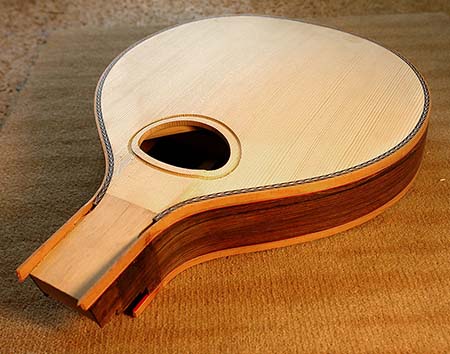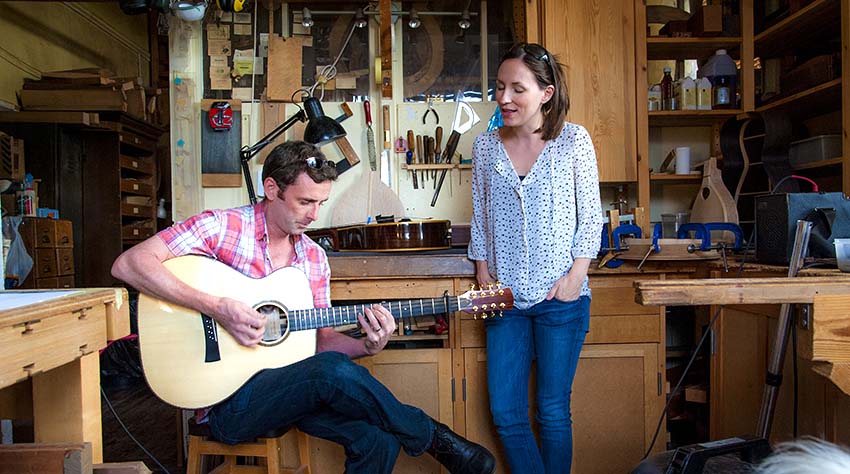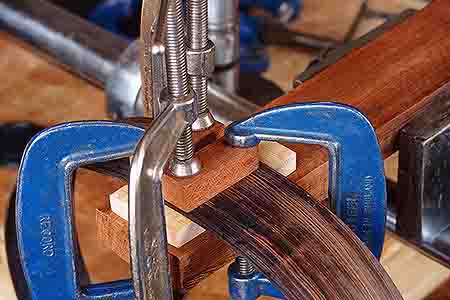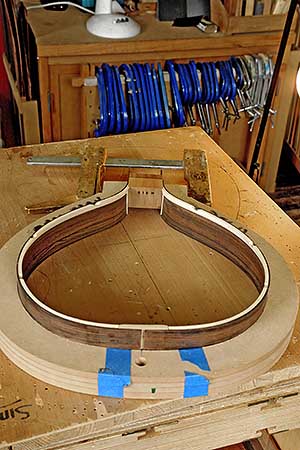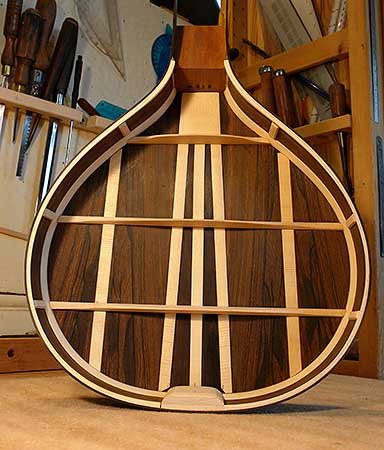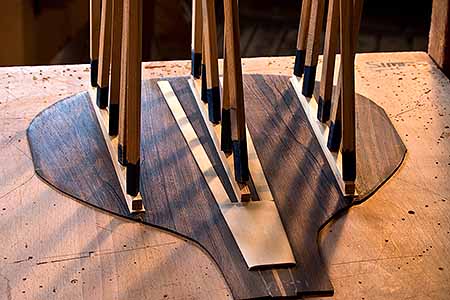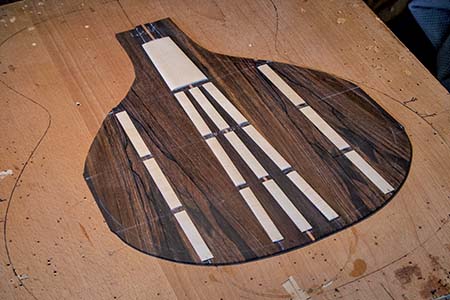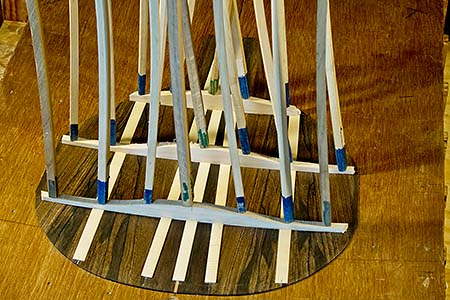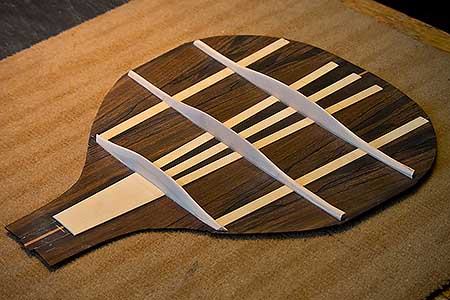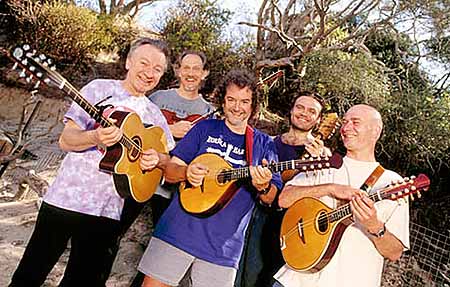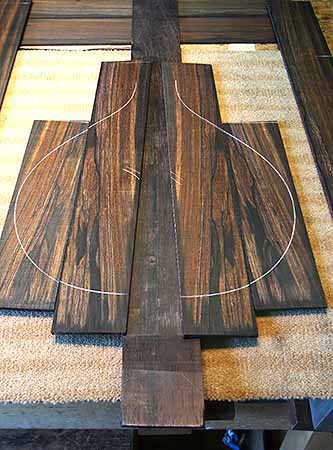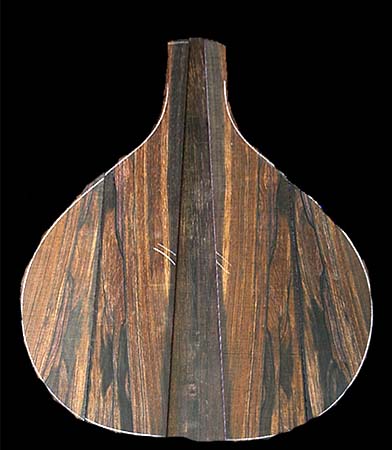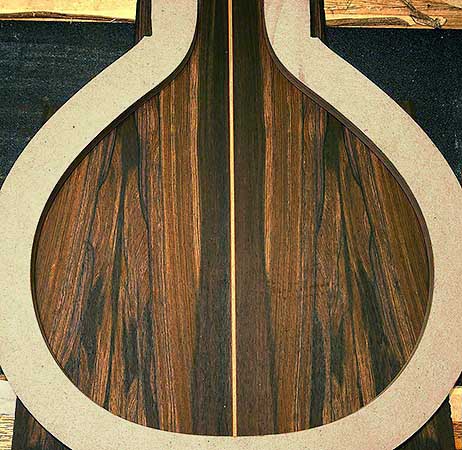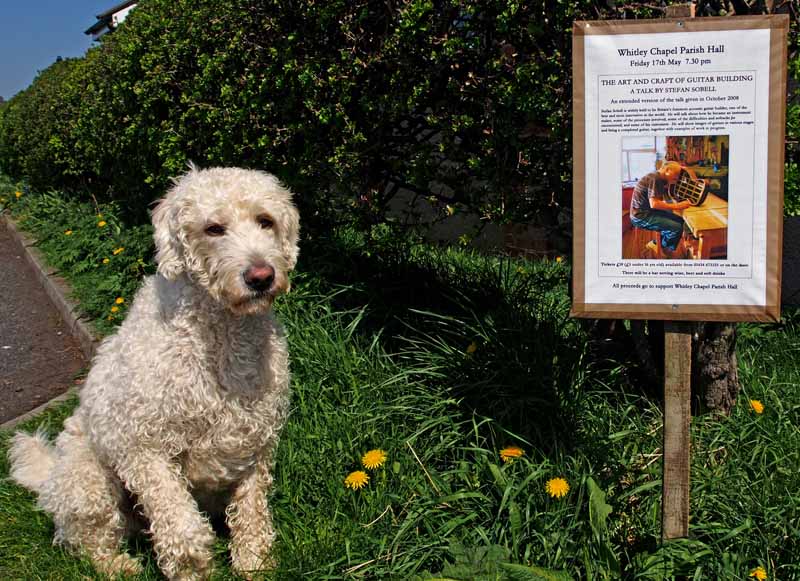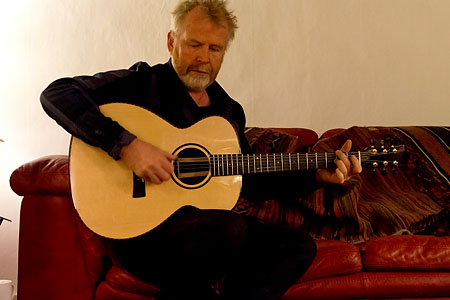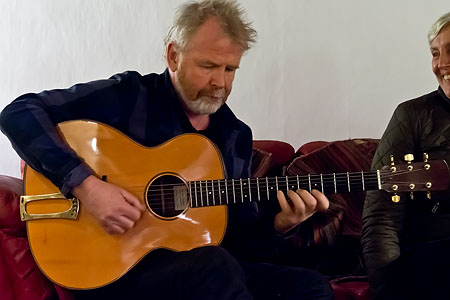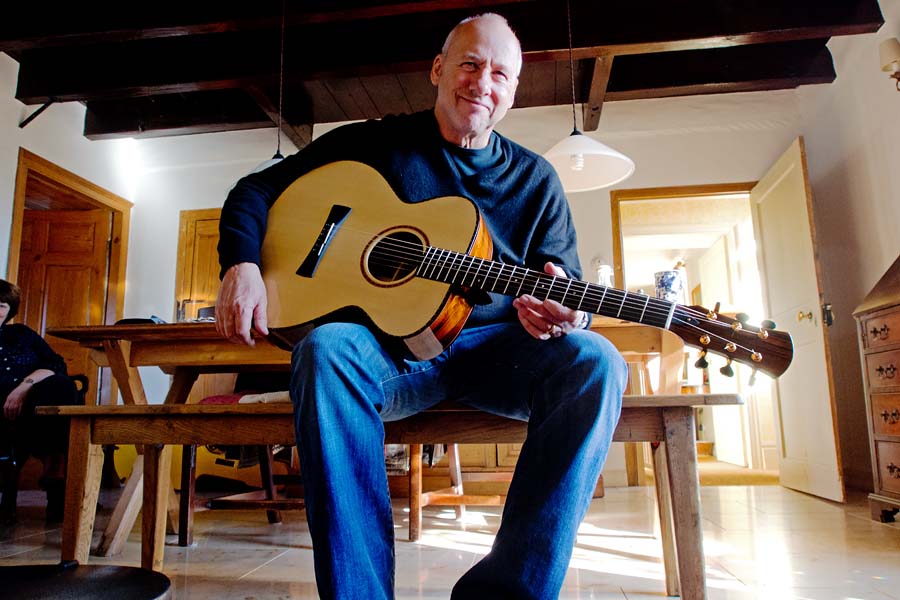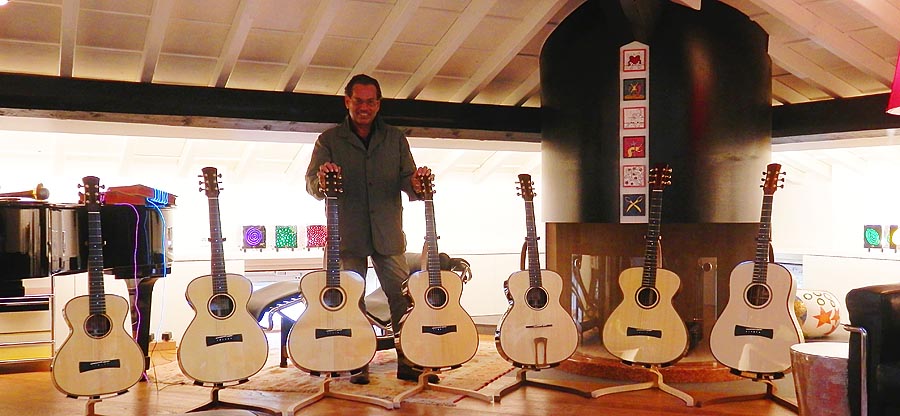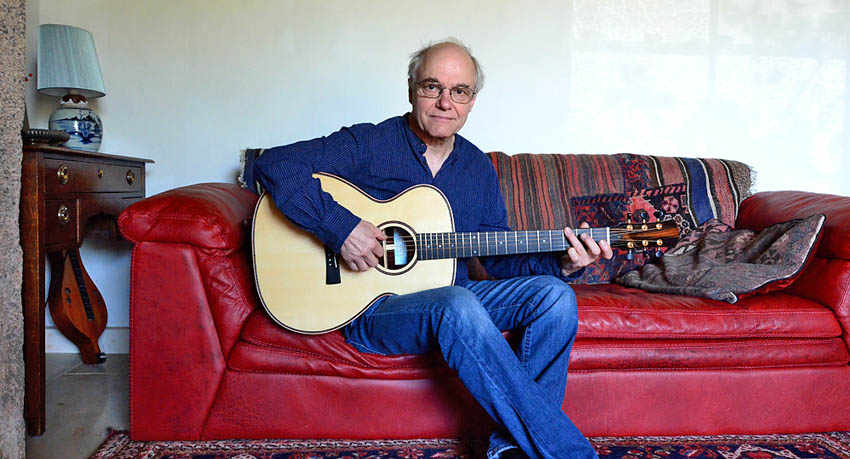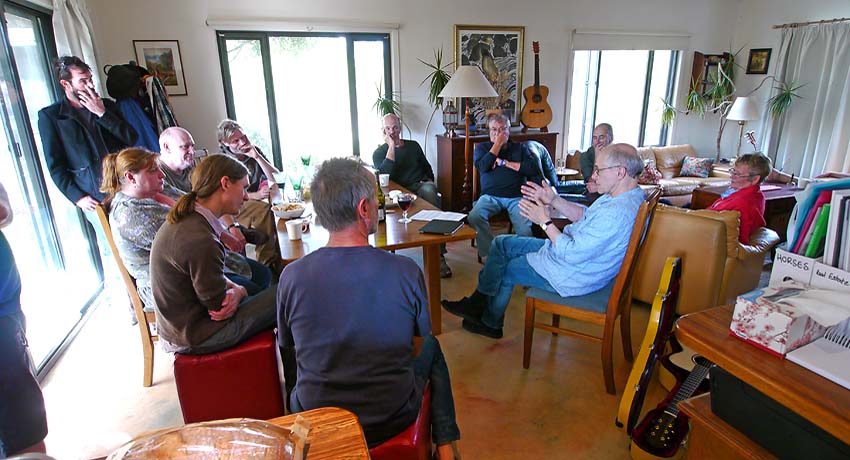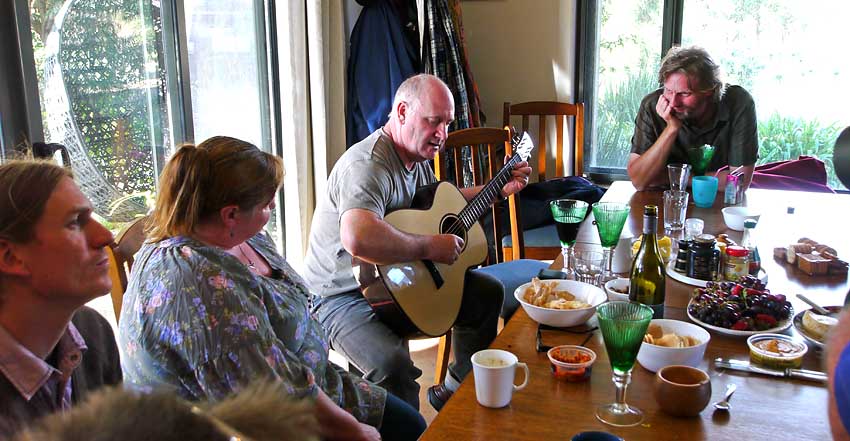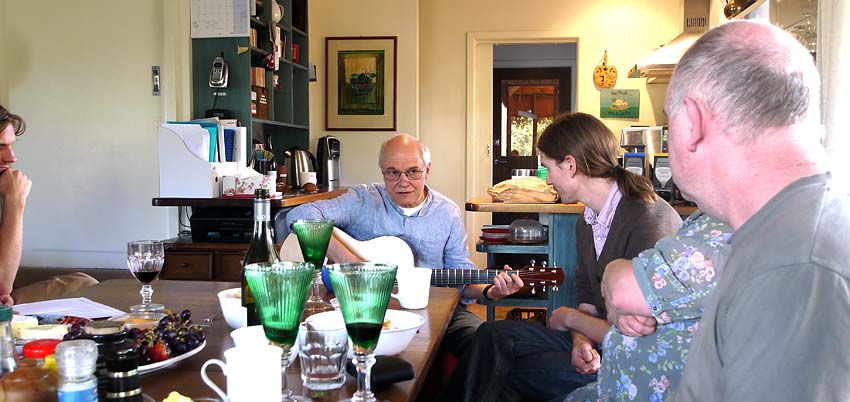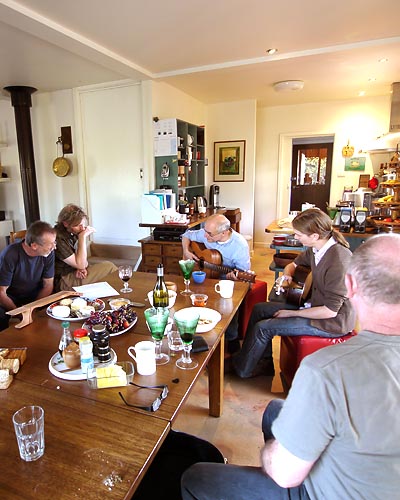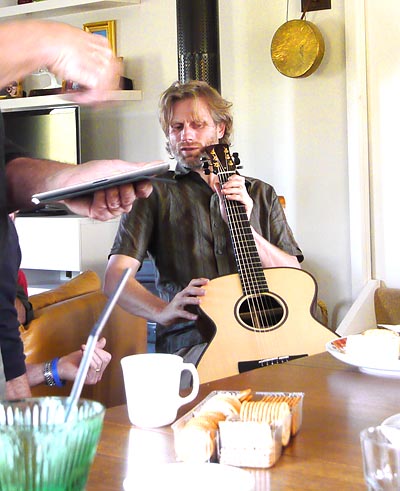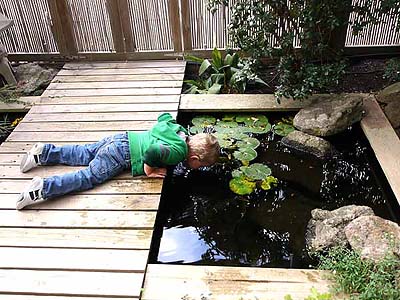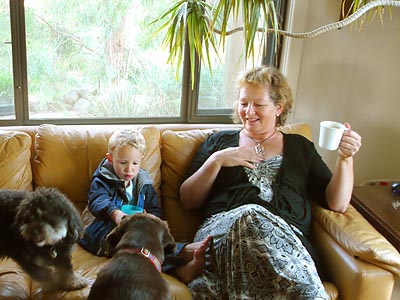Long neck mandolin project part 4
Completing the body
With the back and sides fully prepared, I now had to fit the soundboard. This was rough carved, then final thicknessed, sanded and braced so as to be ready to be glued onto the sides. But before gluing, it sat on the warm shelf for at least a week so as to settle into its final shape.
As before, I wanted any movement to take place before fitting so as to avoid internal tension as far as possible.
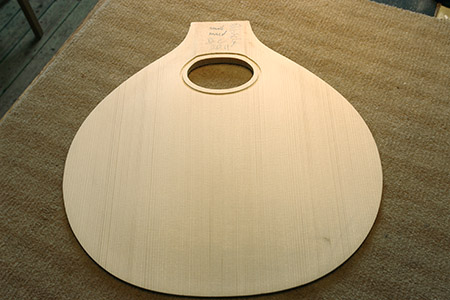

Before fitting the top, I first checked the fit of the top with the sides (which already had the top lining glued in place). Anywhere the fit wasn’t perfect was trimmed until it was.
This tends to involve going round and round, improving one area while making others just a little worse. But eventually the fit is perfect.
Then I spread the glue around the lining and top of the sides and clamp the soundboard in place.
To take the bindings and purflings, I routed L shaped ledges around the top and bottom of the body using a laminate trimmer and different bearings to give the different width cuts needed. I didn’t photograph this procedure, but here is a picture of a guitar ready for routing.
It is clamped in a flat bottomed cradle to keep it level, and moved around the stationary cutter. The cutter can move up and down to accommodate variations in height, but the width of the cut is fixed and determined by whichever bearing is attached to the cutter.
This has to be repeated with a different size bearing for each different width ledge, i.e. once for the binding ledge and again for the purfling ledge.
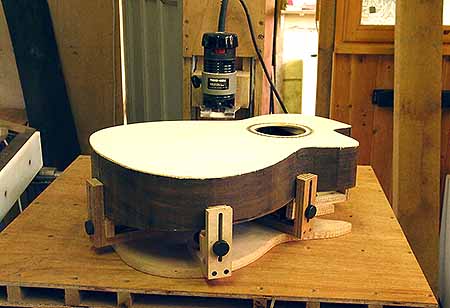

I next bent the Cuban mahogany binding, the red/green/gold back purfling and the Birdsfoot soundboard trim to shape on the hot pipe bender, and trimmed the ends to mitre in with the purfling down the centre of the back and where the sides meet.
I ran glue around the routed ledges, fitted the purfling and bindings in place, and then taped them tightly. After all these years taping binding still seems a primitive system, but it works well and my attempts to devise an effective alternative have not worked out.
Part of the problem is the stiffness of wooden binding, as it requires a stronger pull to make sure it is properly in place than does more flexible plastic binding.[/one_half_last]
[one_half]When the glue had thoroughly dried I (carefully) removed the tape before scraping down any proud binding and purfling. I then sealed this and sanded it clean.
Now the body is ready to receive the rosette, and then the neck and fingerboard.
